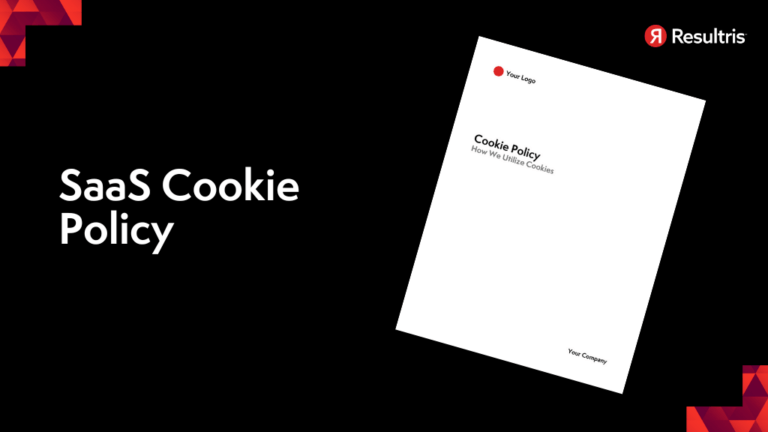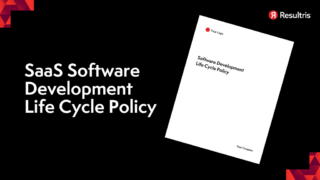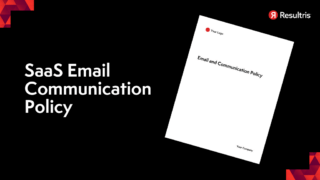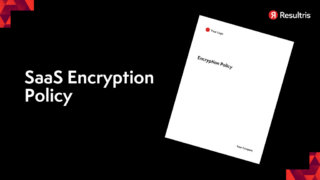

Have you ever wondered how your favorite SaaS platforms manage your data? It’s all in the cookie policy. This seemingly small aspect plays a crucial role in how SaaS companies operate, ensuring they’re compliant with data protection laws and respecting your privacy. This is part of our series on SaaS Compliance and Security Best Practices.
Diving into the realm of SaaS cookie policies, it’s important to grasp their essence and the regulations guiding their usage. Let’s unravel this subject a bit more.
A SaaS cookie policy, essentially, is a document provided by Software as a Service (SaaS) platforms. This policy clarifies the types of cookies a platform employs, as well as their functionalities. The purpose? Providing transparency! SaaS platforms adopt cookie policies to keep site visitors informed about the kind of data collected during their interactions with the site.
SaaS platforms can leverage several types of cookies. Session cookies, for example, exist while the user’s browser remains open, expiring at the session end. On the flip side, persistent cookies stay active on a device beyond single browsing sessions. Then, there are first-party cookies, placed by the visited site itself. And last but not least, third-party cookies come into play when other entities or domain names set cookies through the website.
Well, the General Data Protection Regulation (GDPR) has indeed done a paradigm shift in the data protection landscape. According to this European Union law, SaaS platforms need explicit user consent before placing any non-essential cookies. That’s right, regular pop-up cookie consent banners? Straight from the GDPR playbook!
Another directive to be aware of is the ePrivacy Directive, often referred to as the EU Cookie Law. This directive makes it compulsory for SaaS platforms operating within the EU to provide information about cookies used and obtain visitor consent for their usage. The catch? This law applies even if your platform isn’t based in the EU, but you have EU visitors.
Diving deeper into the realm of SaaS cookie policy, you’ll find several key components spanning across categorizations, functions, and management. These integral parts of a cookie policy boil down to the underlying types of cookies, their essentiality, their origin, duration, and categorical purpose.
It’s imperative to know that not all cookies are born equal. Some, known as essential or strictly necessary cookies, make SaaS platforms operable, ensuring user-friendly navigation and secure session management. Contrarily, non-essential cookies aren’t vital for the basic functionality of a platform but, notably, enrich the user experience or gather data for analytics or marketing.
Tied to the origin, cookies fall into two camps: first-party and third-party. First-party cookies originate from the website you’re currently visiting, facilitating smoother operations by remembering login details, site preferences, or items in your shopping cart. Third-party cookies, conversely, come from other websites that the current site’s plugins or ads feature, primarily serving advertising or analytics goals.
Differences also arise from cookies’ duration. Session cookies, transient by nature, expire once you close your browsing session. They’re responsible for maintaining consistency throughout your visit, noticeably for e-commerce shopping carts. Unlike session counterparts, persistent cookies don’t rush to leave. They stay in your device even after the session ends, remembering you on subsequent visits.
Strictly necessary cookies, the unsung heroes of user experience, handle baseline functions like page navigation and secure areas access. Without them, SaaS platforms wouldn’t work effectively.
Functional cookies strive to enhance user experience. They remember your preferences, such as language or region selection, providing a more personalized browsing session.
Analytics cookies, gathering anonymized data about site usage, aid in understanding how visitors engage with the website. They help spot trends, identify bottlenecks, and fuel enhancement strategies.
Lastly, marketing cookies play a leading role in delivering relevant advertisements. By tracking visitors across websites, they help define user profiles and tailor advertising content, contributing to more effective marketing.
Crafting a comprehensive SaaS cookie policy, you’ve already learned, isn’t an optional responsibility. It’s a must-do for data protection legislation compliance and user trust-building. Here’s a methodical approach to design yours.
Begin by carrying out a cookie audit. That involves scrutinizing every cookie on your SaaS platform. Didn’t come with a list? Running specialized software can help identify them. Next, you create an inventory. The cookie inventory, that is. List out every cookie, categorize them into first-party or third-party and essential or non-essential. Sort them further into session or persistent, strictly necessary, functional, analytics, or marketing cookies.
Now that you’ve your cookie inventory, define each cookie’s purpose. Why does it exist? What’s its function? Don’t forget to include the cookie lifespans; how long they stick around in the user’s device before self-deleting.
Can’t stress this enough, you’ve got to obtain user consent. No longer is it adequate to have a footnote stating ‘By using this site, you accept cookies.’ The user must know and explicitly agree to your cookie use.
Explore the opt-in and opt-out approaches. In an opt-in, the user must actively agree to cookie use. They do nothing, then no cookies (well, excluding the strictly necessary ones). In the opt-out approach, you can place cookies until the user says no.
Lastly, consider providing granular consent options. Users must be given a real choice. Let them accept or reject categories of cookies, say analytics or marketing ones. They accept all, great! They reject or choose some, that’s okay, it’s their right.
Remember, a comprehensive SaaS cookie policy builds user trust. So, tackle it meticulously, keeping your users at the center of it all.
Embarking on your SaaS cookie policy implementation journey? You’re on the right track. Let’s dive into some key considerations and steps for a smooth process and a compliant SaaS platform.
A well-designed cookie banner can significantly impact your user’s experience and your compliance status.
Aim for transparency, use plain English. Avoid technical jargon, making sure your cookie banner’s language is accessible to all users. Primed for clarity, your banner text demystifies cookies like “functional cookies that improve web navigation” or “analytics cookies for site usage insights”.
The controls on your cookie banner need to be intuitive and user-friendly. Empower users by offering clearly labeled buttons for cookie preferences like “Accept”, “Decline”, “Preferences”. Remember, users must have the option to withdraw their consent any time – a principle of GDPR and other privacy laws.
Instead of manually managing cookies, consider cookie management solutions or Consent Management Platforms (CMPs). CMPs like OneTrust or Termly can automate the cookie consent process, track user preferences, and generate reports to demonstrate compliance.
In the spirit of transparency, integrate your cookie policy with your website’s privacy policy. This approach gives users an overview of your data collection practices all in one place. Explicitly state which cookies you use, their purposes, and their lifespan. These details, stated in a language your users comprehend, foster trust and transparency.
By implementing a well-structured, clear cookie policy, you’re not just complying with data protection laws. You’re setting a high standard for privacy and trust in the SaaS ecosystem.
Venturing into the technical realm of cookie management, it’s time to unpack the nuances of cookie setting and reading mechanisms, cookie expiration, deletion processes, and alternatives to cookies such as local storage.
In the world of websites and software, cookies function as the guardians of user-related data. Their primary task involves storing pieces of information temporarily (‘session’ cookies) or over a longer duration (‘persistent’ cookies).
In their role, cookies spring to action when a website gets loaded. Now, how does this transpire? Simply put, a web server sends a ‘Set-Cookie’ HTTP header to a web browser. Following its receipt, the browser then returns the cookie to the server with each successive request.
Essentially, when a user visits a site, the server sets cookies containing a unique ID to monitor the user’s activity on that specific site. In a nutshell, this exemplifies a cookie setting and a reading mechanism.
The life of cookies isn’t indefinite. They come with an expiration date – a timestamp that dictates the duration of their stay on a user’s device. Session cookies, true to their name, stay around until the user’s browsing session terminates, whereas, Persistent cookies persist until their specified expiry, which could range from minutes to years.
The termination of cookies happens in two ways: automatic expiration (as dictated by their lifespan) or through manual deletion by the user. Users possess the control to remove cookies via their browser settings – a step that many undertake as part of their online privacy habits.
With the growing awareness surrounding online privacy, alternatives to cookies have gained traction. A notable mention here is Local Storage – an HTML5 web standard. It amasses more storage space, stores data with no expiration date, and enables storing of large amounts of data locally, without impacting website performance.
Unlike cookies, Local Storage doesn’t require data to be sent back to the server with every HTTP request, a victory for efficiency. However, it’s in its infancy compared to the well-established cookie. As a SaaS business, exploring these alternatives offers an additional route of ensuring an optimized user experience.
Following our deep dive into the workings of cookies and their alternatives, it’s time to discuss operational considerations for managing cookie usage in your SaaS platform.
Routine cookie audits become a crucial tactic. Audits not only identify what cookies your platform uses but also match the actual function of cookies in your site. They track changes and ensure that your platform complies with evolving data privacy norms. For example, you might discover upon audit that certain cookies have become obsolete, requiring deletion from your site and update in the cookie policy.
Importantly, cookie audits provide insights into whether you’re serving only essential cookies upon first landing or if some consent-dependent cookies get activated prematurely. Regular audits root out such non-compliant activities, keeping your platform transparent and user-trustworthy.
Leveraging third-party services implies the insertion of third-party cookies within your platform. It’s where your control reduces, and complexities multiply. Yet, successfully managing these cookies ensures seamless user experience and data privacy.
Primarily, understand what data these cookies collect and if the third-party entities use them for any purposes beyond your service requirements. Pose these concerns during your vendor selection and negotiation, maintaining data privacy as a crucial contract condition. Carry out verification audits to ensure third-party compliance with your platform’s cookie policies and larger data protection requirements.
Knowledgeable employees form the backbone of successful cookie management. Understandably, train employees across roles – developers, UX designers, and customer service representatives – on best practices for cookie usage and the implications of lax procedures. For instance, running unauthorized A/B tests with tracking cookies can infringe upon privacy norms and damage user trust.
Ensure that the employee on-boarding blueprints outline cookie usage guidelines, and regular training sessions update employees on the changing data protection landscape. Explicit internal policies on cookie usage allow everyone in your organization to maintain cookie compliance as they fulfill their duties.
Achieving user privacy and transparency isn’t as difficult as you might think. Let’s get down to the nitty-gritty under these three subtopics.
Transparency begins with a clear explanation. So, start with simplifying complex cookie concepts for users. Create a user-friendly Cookie Policy page, where you explain why you’re collecting data and what types of cookies you’re using. For instance, clarify why you use performance cookies, reassure users that such cookies merely analyze their activity and help improve the website. It’s an opportunity to build trust through clarity.
Next comes the aspect of data collection and sharing. Be upfront and straightforward regarding these matters. For example, if you use third-party cookies for better analytics or for advertising, convey this to the users. Do not hide or understate details about third-party affiliations, data sharing, or any potential security concerns. Transparency helps you forge a strong relationship with users, so never compromise it under any circumstance.
Lastly, it’s crucial to educate users on their rights to reject or delete cookies. Outline the users’ rights prominently and explain how they can exercise these rights. For instance, detail the process of managing cookies through browser settings, and remind them that they can change settings anytime they want. This way, you not only ensure compliance with data privacy regulations but also empower your users, which ultimately fosters user loyalty.
Operating in the SaaS landscape mandates stringent adherence to data privacy laws, with a keen focus on seamless cookie management. This segment plunges into the documentation and legislative aspects, accompanying the framework laid out for you earlier on cookie usage and maintenance specifics.
Invited to join the ranks of SaaS platforms championing transparency? Then, consider meticulous record-keeping as your go-to strategy. It’s not merely a best practice, but a stringent requirement to comply with data privacy regulations such as GDPR and CCPA. Remember, a well-documented cookie consent log aids in demonstrating your company’s compliance, should regulators knock on your door.
Every time a user consents to your cookie policy, capturing details, like the time, date, and the cookie policy version, is paramount. Systems that can automatically record these particulars add to your efficiency. Remember, consent logs can come under scrutiny during audits, so accuracy is key. Predict audits, don’t react to them!
Stellar record-keeping is just your first step in showcasing commitment to data privacy. Regulators won’t take your word for it, they’ll demand proof. In the SaaS realm, demonstrating compliance isn’t a one-off checkmark, it’s a continual, evolving process.
Cookie audits form the backbone of this process. Regular internal and external assessments help to identify any oversight in cookie management and document the steps taken to rectify them. Similarly, maintaining an internal privacy policy that details your company’s cookie usage, complete with updates and changes, builds a strong compliance narrative.
Lastly, staff training in cookie management and privacy regulations plays a significant role in sustaining compliance. These initiatives strongly echo your commitment to data protection, painting a picture of your brand as a trust-worthy SaaS provider to both users and regulators alike. Don’t see proving compliance as a chore, see it as your commitment to user privacy coming full circle.
In the realm of Software as a Service (SaaS), no challenge goes unmet, especially when it comes to cookie management. This section provides an exploration of potential hurdles and their practical solutions.
Managing cookies demands a significant precision for a cross-device tracking process. Different devices may access your SaaS platform, ranging from smartphones to desktops. Every time a fresh device logs in, a new cookie gets generated, complicating tracking. Privacy-focused browsers and incognito mode further add to the complexities.
Ensuring effective cross-device tracking involves devising strategies for unified tracking. Harnessing User-ID features can offer a ‘multi-device tracking’ solution, which assigns an anonymous ID to users, ensuring consistent tracking across devices.
Delivering personalized user experiences and meeting privacy demands often seem like a jug puzzle. One falls short as you pour in the other. Personalization leans heavily on cookie data, while privacy regulations call for minimizing data use.
The trick lies in achieving a balance. Opt for cookies that drive personalization yet adhere to regulations. Encourage users to share their preferences, reinforcing your commitment to ethical data practices. Interactive cookie consent banners often make for an effective choice, providing both clarity and control to the users.
Single-page applications pose a unique challenge since traditional server-side cookie management techniques might fall short here. In such instances, local storage or session storage proves helpful, ensuring browser-based cookie management.
Using APIs for cookie handling — more specifically, HTTP-Only cookies via server-side rendering — can offer a dynamic solution in this scenario, preserving site performance, and fortifying security. It favours a seamless user experience, simultaneously respecting privacy controls in single-page applications.
To navigate the labyrinth of SaaS cookie policies, it’s paramount to follow best practices. Let’s delve into these strategies in detail.
Incorporating a ‘Privacy by Design’ approach in your organization’s cookie policy makes data protection an integral part of your system architecture. This principle insists on proactive behavior, considering privacy at the initial stages of designing systems, rather than adding it as an after-thought. By doing so, you’re allowed to effectively account for privacy from a policy and infrastructure perspective, minimizing the risk of non-compliance.
Keeping cookie policies updated is key. With rapid technological advancements and frequent changes in laws, reviewing and updating your cookie policies becomes a vital task. Regular reviews ensure alignment with current law provisions and protect your organization from potential lawsuits or fines. In fact, it’s recommended that you conduct a review and update session every six months. This maintains your standing as a reliable service provider and reinforces your commitment to user privacy rights.
Finally, don’t overlook the power of clear communication with your users. You are not just notifying them of the cookies in use, you’re also educating them about what data is being collected, how it’s being used, and allowing them control over their own information. Remember, complex jargon and unclear terms can lead to mistrust. Adopt a simple, user-friendly language in your cookie policy announcement, cookie banners, and consent forms. This transparency fosters trust, ensuring sustained user engagement. Consequently, you’ll not only adhere to statutory norms but also instill a sense of security among users, driving long term user loyalty. Remember, an informed user is a satisfied user.
To gauge the potency of your SaaS cookie policy, you’ve got to understand the dimensions that mark its effectiveness. These dimensions ensure you stay on the right side of regulatory frameworks while guaranteeing a seamless user experience.
Assessing user engagement with cookie controls stands as an accurate means to measure the effectiveness of your cookie policy. Start with analyzing the number of users who interact with your cookie consent prompt. By tracking the rate at which users accept or deny cookies, you gain a clearer understanding of users’ privacy concerns. For instance, if 65% of users deny optional cookies, you could interpret this as heightened need for privacy among your users.
Don’t overlook the influence your cookie policy exerts on user experience and conversion rates. After all, a convoluted, intrusive cookie consent prompt might prove a deterrent, causing potential customers to bounce off your site. Monitor metrics such as session duration, page views, bounce rates, and conversion rates. For example, if there’s a 20% increase in bounce rates after introducing a new cookie consent prompt, it’s an indication that it’s impacting user experience.
Most importantly, don’t neglect compliance metrics while measuring the effectiveness of your cookie policy. Remember, regulatory compliance isn’t just about avoiding fines—it also promotes trust and credibility among your users. Regularly review and update your cookie policy per evolving regulations, like GDPR or CCPA. It’s beneficial, for instance, if your SaaS platform maintains a consent rate of 98% with zero breaches reported, indicating robust policy enforcement and adherence.
In the labyrinth of SaaS cookie policies, sticking to your legal obligations and ethical responsibilities isn’t just a mere choice—it’s imperative. This part guides you through the maze of third-party cookie dilemmas, along with ethical factors related to data collection.
Third-party cookies often pose challenging legal hurdles, as they’re served via external parties associated with your website. According to Claude Migisha Kalimba at Internet Policy Observatory, breaches follow a trickle-down effect, meaning, as a SaaS owner, you’re held accountable for third-party cookie misdeeds.
Don’t be the prophesied “weak link” in your users’ data security. Collaborate with your third-party partners to ensure they’re GDPR compliant. Draft legally sound agreements that explicitly define cookie data usage and manage liability for noncompliance. Beware, lack of intent doesn’t absolve liability, as per the European Data Protection Board guidance on cookie requirements.
Switching to the ethical side of the discussion, it’s not just about data—it’s about trust. Robots Network’s 2019 study suggests transparency is the linchpin of user trust. It starts with you; manifest honesty in how you’re utilizing collected data.
Balance is crucial—yes, cookies enhance user experience, but in the wrong hands, they’re potential privacy nightmares. Always keep user consent at the center of your cookie strategies. Provide clear, easily manageable opt-out options, echoing the General Data Protection Agency’s emphasis on receding consent.
Honoring valued customer relationships, respect privacy as much as you crave data. Remember, maintaining trust is often harder than crafting a cookie policy. So tread cautiously and tread mindfully.
As the digital landscape evolves, so too does the realm of cookie management—particularly in the SaaS environment. Let’s explore some cutting-edge trends that are inevitably reshaping cookie management strategies and norms.
In the face of growing privacy concerns, breakthroughs have emerged in the form of cookieless tracking technologies. By stepping away from traditional cookies, these technologies propel privacy-forward web browsing. For instance, probabilistic fingerprinting capitalizes on anonymized user identifiers, providing a broad approximation of user behavior. Simultaneously, deterministic tracking uses login credentials as means to understand specific user activities. Both these methodologies significantly curb the reliance on traditional cookies, serving as pioneers in the privacy-centric era.
AI and Machine Learning are revolutionizing numerous fields, and cookie management isn’t an exception. These robots lend their hands in managing user consents, making the process efficient and less prone to human error. Predominantly, they allow customization according to user preferences, analyzing patterns in consents to derive valuable insights. It’s a prime example of how SaaS platforms can leverage technological advancements for better, more compliant cookie usage and user consent management.
Web browsers have forayed into the privacy-determined surf, armed with features to control and regulate cookies. Enhanced Tracking Protection in Firefox and Intelligent Tracking Prevention in Safari are duly restricting third-party cookies. Even Google Chrome, widely known for its liberal cookie norms, has declared its intent to phase out third-party cookies by 2022. The exponential increase in these stringent browser privacy features signifies the imminent transformation of traditional cookie strategies, pushing SaaS platforms to rethink and redo their existing structures.
Adapting your SaaS platform’s cookie policy to different business models isn’t just a regulatory requirement. It also helps enhance trust, ensure data security, and nurture beneficial customer relations. Diving into the specifics, let’s examine unique cookie considerations for the B2B, B2C, and freemium SaaS models.
In B2B SaaS models, cookie policies play an integral role in enhancing customer relationships and trust. Since businesses typically collect and process larger amounts of data than individual users, the need for stringent data protection measures, including comprehensive cookie policies, becomes paramount.
For instance, B2B SaaS models often incorporate redirection and tracking cookies, which permit data analysis and website optimization. However, these platforms also require increased transparency regarding their tracking practices. This obligation directly impacts their cookie policies, necessitating clear explanations regarding their specific use of cookies and the data collected through these technologies.
Shifting to B2C SaaS models, the scenario alters a bit due to the larger user base and higher engagement levels. Here, cookie policies must cater to customers who are less likely to have technical knowledge about cookies and their utility. As such, these policies ought to be simple, clear, and extremely user-friendly.
Moreover, because B2C SaaS platforms are generally more product-focused, they often use a broader range of cookies, such as those tied to personalization and user behavior analysis. Accordingly, the B2C SaaS cookie policies must detail each cookie’s specific purpose and data it collects, equipping users with the knowledge to make informed consent decisions.
Moving on to the freemium SaaS models, cookie policies take another peculiar turn. Given that freemium modes rely heavily on user engagement and conversion, cookies often deploy for personalized marketing and user experience modification. These adjustments can enhance the user’s journey, pushing them towards conversion from a free to a paid user.
Freemium model cookie policies must be transparent about their use of marketing, personalization, and tracking cookies, highlighting how these may affect the user’s experience. Striking the balance between ensuring an engaging user experience and respecting user privacy becomes pivotal in the freemium model’s cookie policy, necessitating a keen focus on clear, comprehensive, and user-centric approaches to consent management.
In the global SaaS marketplace, cookie policies present unique compliance challenges. Cross-border operations require you to adhere to differing regional requirements. Tailoring your cookie policies and banners to suit local regulations isn’t a choice, but a mandate in this era of digital governance.
Navigating diverse regional requirements can feel like navigating a labyrinth. Different regions enforce different cookie laws. For example, the European Union’s General Data Protection Regulation (GDPR) mandates explicit user consent before collecting their data, while the California Consumer Privacy Act (CCPA) applies similar regulations over Californian residents. Notwithstanding these, other regions enforce their unique set of laws.
Strategies to navigate regional requirements include:
Localization isn’t just about language, it’s about respecting culture, legal norms, and user preferences. A localized cookie policy goes beyond translation, incorporating regional legal requirements and cultural nuances.
Developing a localized cookie policy:
By successfully navigating differing regional requirements and localizing your cookie policies and banners, you can ensure international compliance, improving user trust and SaaS performance on a global scale.
So you’ve seen the value of cookie policies in safeguarding data and maintaining user privacy on SaaS platforms. It’s clear that transparency and adherence to regulations like GDPR and CCPA are non-negotiable. You’ve also delved into the challenges of cookie management and the impact of policies on user engagement and compliance. With emerging trends like cookieless tracking and AI integration, the landscape is evolving rapidly. You’ve understood the legal and ethical implications, underscoring the importance of user data ethics and transparency. As you venture into the global SaaS marketplace, remember the significance of international compliance, localizing cookie policies, and respecting cultural nuances. It’s not just about abiding by the law – it’s about earning user trust and enhancing your SaaS platform’s performance worldwide.
Disclaimer
Please note that the information provided in this blog post is for informational purposes only and does not constitute legal advice. We are not lawyers, and reading this content does not create an attorney-client relationship. For legal advice specific to your situation, please consult with a qualified attorney.




